It may seem like 28-year-old Danish dressage rider, Daniel Bachmann Andersen has suddenly appeared from no-where to claim the mantle, next big thing in world dressage, but nothing could be further from the truth. From the time a precocious eight-year-old fronted the local Grand Prix rider and asked about piaffe and passage, Daniel has been on a journey, finding the right people to work with, finding his own way – and now, with four of the most exciting Grand Prix horses in the world in his stables, he is reaping the rewards…
An interview with Chris Hector on-the-spot in Frankfurt.
Pix Dressage News, Jacques Toffi, Ros Neave and Rebecca Ashton
Photo; Kenneth Braddick
“I come from a small family, my parents had some horses but not like professional. But I was always very fascinated about riding and horses, by the time I was six, seven, eight, I was already very interested in stables, so then I started riding like everyone else.”
“Then I met Morten Thomsen, the former Olympic rider, because he lived in the same village as I did. He gave a clinic when I was nine. I was a very forward-going child, so I asked him if his horse could do piaffe / passage, it was his Olympic horse. He was very interested, a young kid asking about piaffe / passage, so I caught his attention, and then he invited me to come and see his place.”
“In the end, I was like every weekend there, every holiday, every afternoon. I was riding, I was going in the stables and helping the girls as much as I could, mucking out, grooming, everything. Basically I was there from age ten to sixteen. I kept saying, I want to be a bereiter, I want to be like you. And he said, no you don’t have to be like me, I work way too hard, blah blah blah. But I kept saying I want to be a bereiter.”
When Daniel finally went off to become a bereiter, he went to one of the world’s best, and he knew already he was in for the long haul…
“Morten said, then you have to go to Germany – I will find you a good place in Germany, and I don’t want you to come home when it hurts. So he called Rudolf Zeilinger, who was the coach of Denmark at that time.”
“So there I was. In winter. Fifteen years old. Three days riding, and after the third day, he said, do you want to do a bereitership with me? I said, yes, I have just six more months in school, then I’ll come back. I went back, did my exam, and in the summer, moved to Germany. Did my bereitership, three years, then another three years riding in his stable, six years.”
That’s enough time to really learn properly…
“It was really a good time, he was the one that really taught me to ride.”
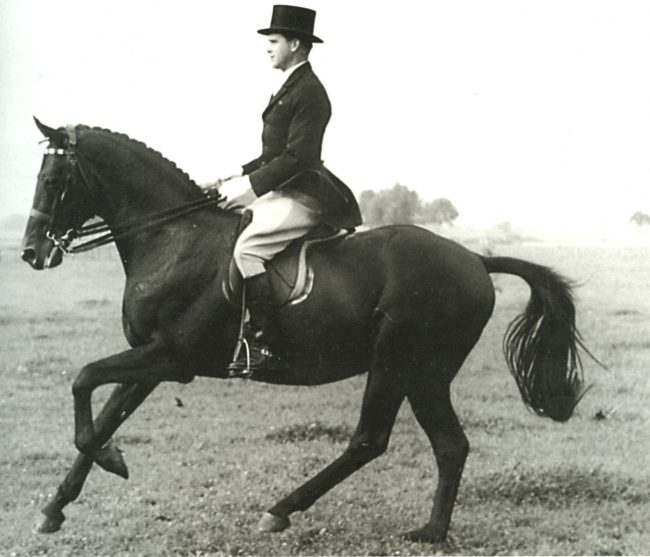
And that puts you in touch with that wonderful Willi Schultheis tradition…
“Light hands, ride from the seat, mostly seat, little leg, that was how I was imprinted, and when you get that from sixteen to twenty-two, every day! I was eighteen when I did my first international Grand Prix. Rudolf was very good, he let me ride at a lot of shows, he was like I don’t want to ride at any more shows… I was doing all the shows in the end, and that was a really cool opportunity, I could get a lot of experience riding at shows, and start to make a name.”
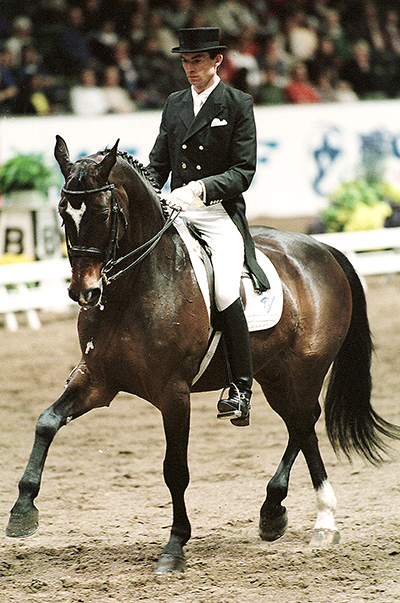
Rudolf and Lijivino…
“Then I met my wife, she came to train in Germany, she comes from Norway. A year after I met her, she got pregnant and we decided we didn’t want to be Germany so far away from my parents and far away from her parents. We were twenty two and we were about to be parents. So I stopped at Rudolf’s, which was very hard for me, and I know, for Rudolf also – but we have a very good relationship today. I really respect him a lot and I am very thankful for what he did for me.”
“I started working for Andreas Helgstrand, two years, that was also a great time. I wouldn’t be without it, I learned a lot. It’s a big team, a lot of fun, a lot of horses in and out, it was something different to what I do today. But it was a good experience, especially working with a lot of young people. It’s very important that you can work in a big team – Rudolf had a small team, we were like five employees, but with Andreas there were many many.”
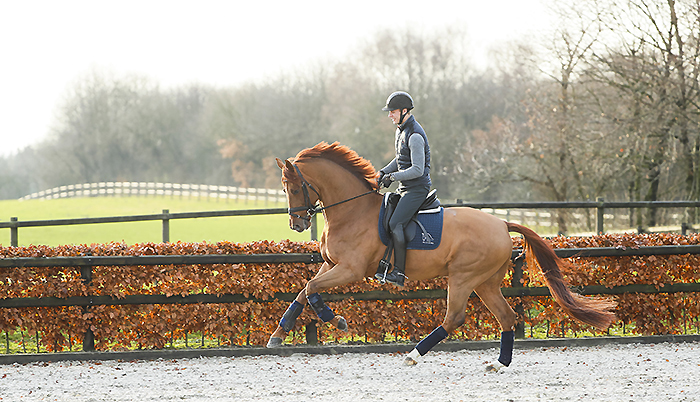
Veneziano, the youngest of the Grand Prix horses working at home at Blue Hors…
(Photo – Jaques Toffi)
“Then I was head hunted by Blue Hors, and that was four years ago. There were a few Grand Prix horses there, but not much – so I could ride my 70% and I knew I could do that internationally, but I had to be patient, I knew I had to make my own horses from the beginning, which I’ve done now.
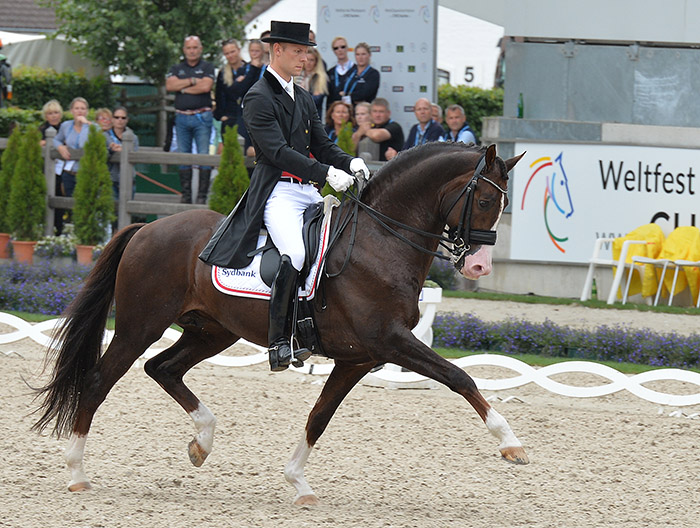
Member of the Danish medal winning team at Aachen in 2017 with Don Olymbrio, the Danish support team look on…
I have four horses that are going Grand Prix – Zack, Zepter, Don Olymbrio and Veneziano – and a lot of good young horses on the way.”
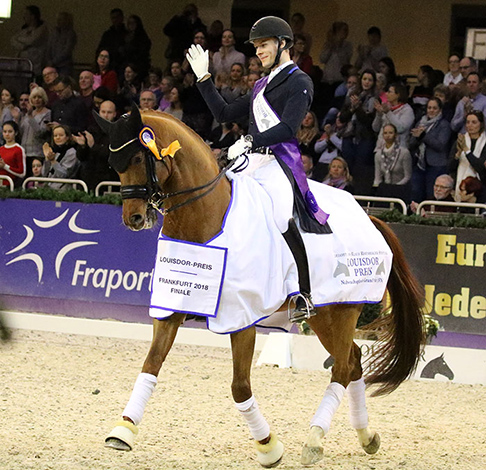
Photo; Kenneth Braddick
Veneziano is perhaps the least well known of the quartet, he is only now coming into international competition, but he came from behind at Frankfurt’s end-of-the-year Louisdor-Preis – a class for young Grand Prix horses – to show the world what he can do…
Blue Hors Veneziano is an interesting mix of Dutch and German blood. He is by the Krack C / Jazz son, Vivaldi, out of Fabina, by Donnerhall out of the Pik Bube mare, Fiesta, who is the dam of Don Schufro. The stallion has the pizzazz and presence of Jazz with the Donnerhall foundation, cool passage / piaffe / passage, lovely canter. Veneziano was one of three eight- year-olds in the class and finished third on 73.86% in the warm up class.
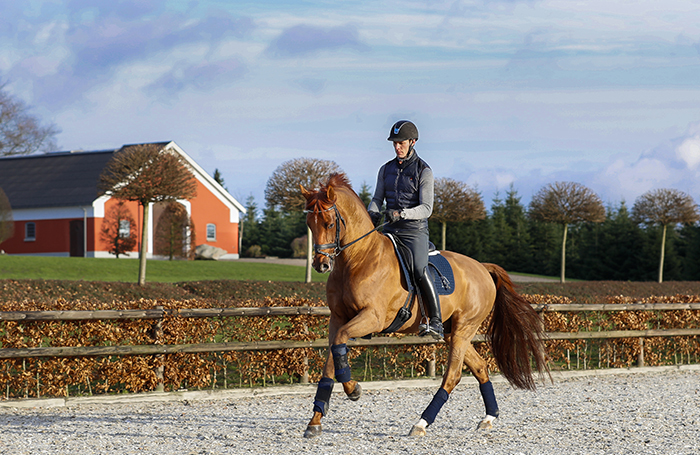
Another star in the making, Blue Hors Zackerey, by Zack
(Photo – Jaques Toffi)
” Veneziano is not international yet, but he competed here today without the whip, today I rode a little too hard, I have to trust a little more, but it is hard to trust when you don’t know how the horse will react. He got a little whoa what’s happening? He’s only eight-years-old, I’m totally happy with him. I hope I can ride a little bit more easy going with him on Sunday in the final.”
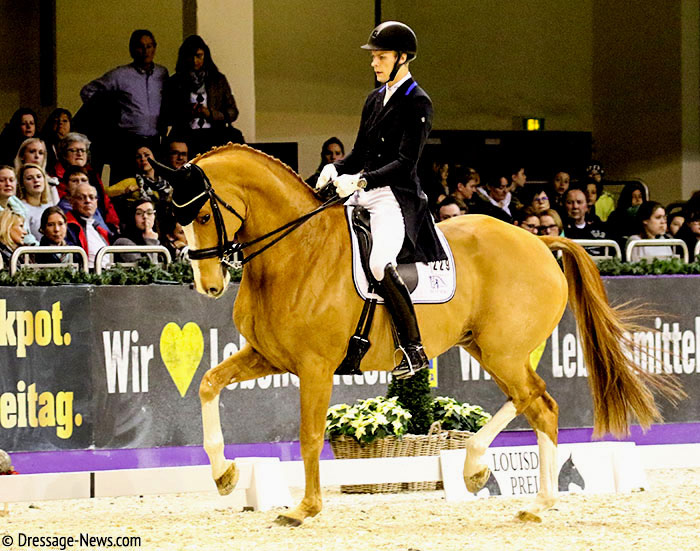
A new star, Blue Hors Zepter with Daniel (Photo; Kenneth Braddick)
Usually the Grand Prix at Frankfurt is not exactly a super class, but this year it was, with Desperados returning from injury with a strong test, and a new star shining – Blue Hors Zepter (Blue Hors Zack / Wolkentanz II). The chestnut gelding has a huge rhythmic trot, awe-inspiring half passes, very fine passage / piaffe tour, unhesitatingly from walk to passage, and the big gelding really sits in the piaffe. The canter is huge, and the canter pirouettes are wonderful.
What a crowd this Frankfurt audience is, they know they have really seen something special, and even though their German hero, Isabell Werth had gone the horse before, they cheered this new star combination – and the judges were brave enough to go with their eyes, first with all on 78.543. Later out back I saw German assistant team coach, Jonny Hilberath who comments – ‘this is the new superstar combination.’
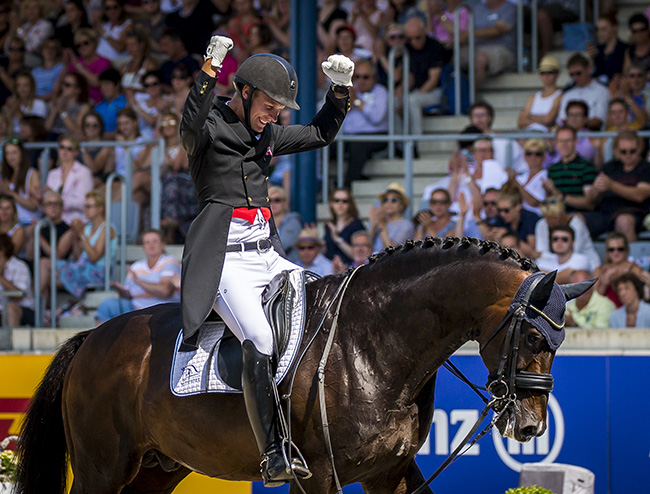
With Zack at Aachen in 2018
You rode Zack at the WEG, now you are riding his son, Zepter at Grand Prix, do you see characteristics that the stallion has passed to his son?
“Yes in the way that they love to work, they love to perform. They are often really good when they get into the ring, they often like to show themselves off. Zepter is a little bit more of a shy horse but Zack is much more macho. Zepter is like very small inside, you have to praise him a lot, and say, good boy, good boy. You can’t tell him off. He’s starting to get better and I can ride him with a little bit more pressure here and there, but I have to be careful. He’s big, but he is small inside. Zack is much bigger, he believes in himself.”
But I think Zepter is your superstar…
“Of course.”
Is that frightening as well as exciting?
“Yes, of course it is, because I see what a horse I have. I educated him myself, together with Lars Pedersen, but it also puts you under pressure. I like the pressure, but I have to work with it because I have never been here before. I’ve been good with Zack, but I’ve not been in this league before, that requires some mental re-thinking. I have to think a little bit what we do – I have already made plan of which shows he’s going to, very few shows, good shows. You cannot ride them at too many shows. It is important to come out at different places, difficult places, so they know it, they learn it – like Frankfurt, and Stuttgart is really difficult.”
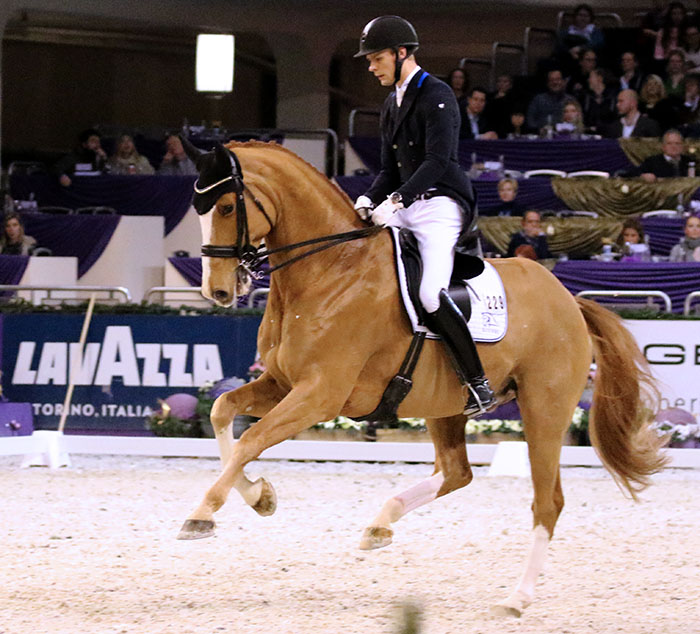
Photo; Kenneth Braddick
Stuttgart was the first show when you said to the rest of the world, hey look at what I’ve got, second in the Grand Prix with 76.826, fourth in the Kür with 81.190…
“There was one other show at Andreas’ place, I won the Special with 78, and the Grand Prix with 76. That was a four-star, and his second national show. Then I was in Dortmund, that was his first international show, he was good but not super good, then he was really good at the Danish Championships, then I gave him a break. Everyone who saw him, could see what was coming, and they wanted me to go to the WEG with him, and Lars, it was mostly Lars, he said, no. We would have killed him, we would not have had a horse today. I’m lucky I have a trainer, and staff around me that actually see these things. Everybody from the outside they see, oh he is much better than Zack, yes, he is better than Zack, but he was not ready. He will be ready next year for the Europeans.”
And the year after that, Tokyo?
“That’s the big goal and that’s what I mean – if we’d gone too crazy this year, then you might not have a horse for the Olympics. That’s what I really love about having three top Grand Prix horses, I can ride all the time and keep sharp, but I can also give them breaks.”
Next Daniel tells us about his young Grand Prix horse, Zepter
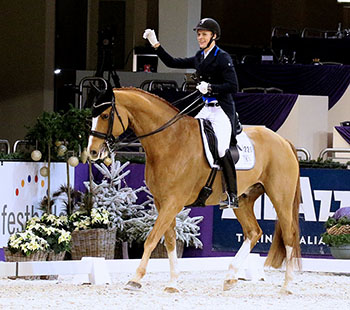
Photo; Kenneth Braddick
What are Zepter’s strength strengths…
“His strength, strengths… obviously piaffe / passage is amazing, the pirouettes, what he has is the X factor, that’s what I really like. He’s big but he is still elegant, he’s expressive, like a dancer, I love it, and he is still not 100% where he can be.”
He could just be a little bit more open in front, don’t you think – another inch would be perfection?
“Exactly. But he is a young horse, and I could easily lose the back, but it will come. And that’s what we now go home and work a little bit on, even better here, even more lightness, even more throughness – he knows everything, all the exercises, it is only about throughness, strengthening, keep him happy – do a little of different things, hacking, all the things I do between shows. I start building up to the shows, then down again, like Zack for example, he now is more in a down period where I don’t train as hard because our next show is in February. I promised him after we won the World Cup at Herning, you can off the rest of the year – not from training, only from shows, I would never put him away in a corner and only take him out when you are going to a show. I ride him every day… somehow. Light trot work, or real training, you cannot treat them like machines, we work as athletes, they are my partners.”
In the final of the Louisdor Cup, Veneziano beat them all: hot favorite, Benjamin Werndl’s Famoso OLD (Farewell III / Welt Hit II) and last year’s Burg-Pokal winner, Hubertus Schmidt’s amazing stallion, Escolar (Estobar NRW / Fürst Piccolo).
Daniel put the win down to a change in mental attitude: That was amazing…
“I’m pretty happy. I went in there, not to win. I went in there to ride mistake free without pressure, so I rode, let’s say, 10% less than I did the first day.”
Did the pressure get to you in the Special with Zepter after you had won the Grand Prix?
“Yeah, I went in there and thought, now I want to win again and I want to go better than I did in the Grand Prix, and I put too much pressure on him, and when you do that on a horse like Zepter, the rider influence goes whoosh, from positive to negative influence and I couldn’t shift him back. I was really frustrated with myself because I wasn’t mentally in the right place because I wanted too much, and that’s something I have to be better at. I’m better when I come in and I’m not the favorite.”
Was there a point in that test where you though, oh maybe I am going to win after all…
“No, I just felt good, okay, this is good for the horse, this is clever riding.”
And it is a very scary arena to ride in…
“Veneziano has not gone to so many shows yet, specially not on this level, it was his second real Grand Prix in his life, and without the whip, so I couldn’t support him with that. I had to trust him today.”
more follows on Daniel’s other stars
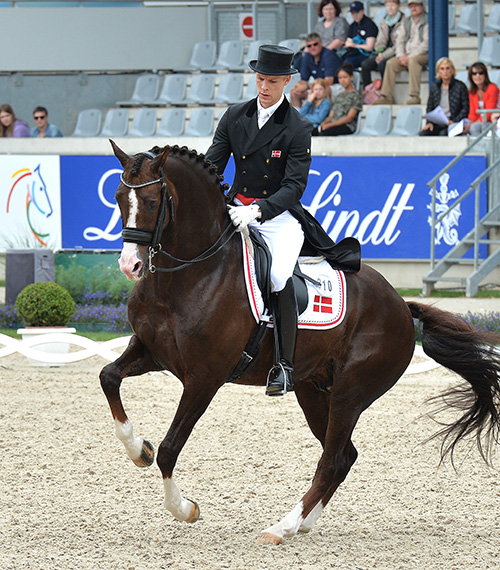
One of the four, Don Olymbrio
How does it feel to have three superstars in your stable?
“I have four! Zack, Zepter, Veneziano and Don Olymbrio (Jazz / Ferro) – right now he is 22nd in the world.”
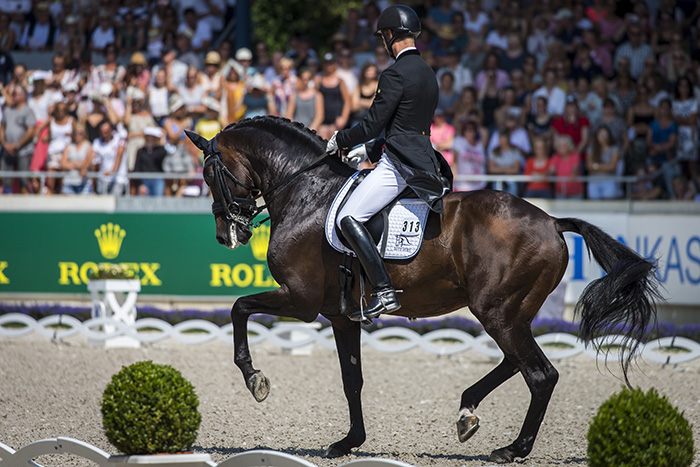
Zack, 10th in the world
And it might be noted, Zack is 10th in the world, and Zepter, 33rd!
“It’s pretty amazing to have so many good horses, I already pretty excited to go home tomorrow and train again with those horses that weren’t here. Obviously the ones that came to Frankfurt get a little Christmas holiday. But I’m just really hungry to go out next year again.”
Is it harder with the stallions that are breeding?
“Yes. That’s why we need really good teamwork at Blue Hors. Some are going on the frozen semen, some are only breeding a little bit, some are breeding the whole time, so we just don’t show them so much. Like Don Olymbrio goes on frozen semen, all year, next year. Zack goes in, but not until after the World Cup final.”
And maybe not so many people will use Veneziano because he is WFFS positive…
“I think we take him out of breeding. I’m pretty sure they pulled him out of the breeding program – he didn’t get that many mares anyway.”
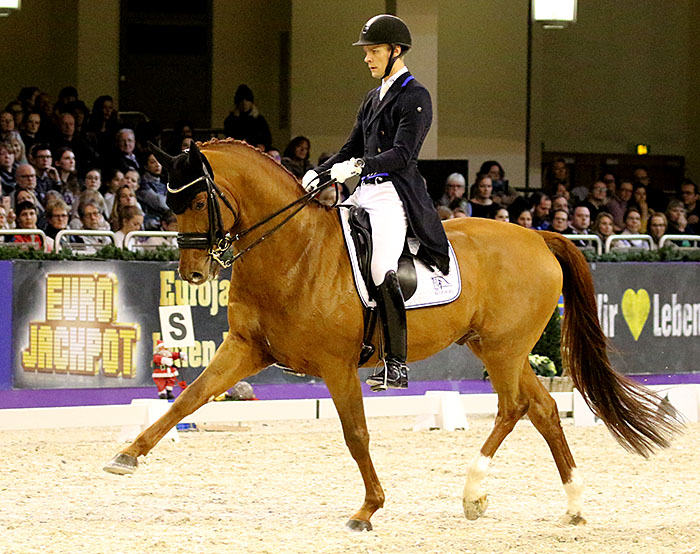
Photo; Kenneth Braddick
How tall is he, because when to stand next to him, he seems very short, but he doesn’t look small with you on him, and you are very tall…
“He is 1.70, I’m 1.90 but he like to carry himself so he doesn’t look small. We actually work him a little bit more in a lower frame because he likes to come up in front. So sometimes in training, when he wants to come up and drop the back and the hind legs, then I have to ride him lower in front to get the back up and the hind legs under. Then you can let him come back up again, and then after five minutes he starts to lose the back again, so work him a little bit down again, get him through, then pick him up again. That’s how we work – gymnastics for the body.”
Do you work most of the time by yourself, with no eyes on the ground?
“I have a really good colleague, Nanna Merald (since everyone in Denmark seems to have three names, she is Nanna Skodborg Merald, who was a megastar junior and young rider with the wonderful, Millibar, who then took her to success in open World Cup classes back in 2014. Twenty-four- year old Nanna joined Blue Hors in February 2018 after completing a degree in Molecular Biology.) and we help each other out. We ride together and then sometimes, I’ll say, hey can you look, that’s good, otherwise I skype with Lars.”
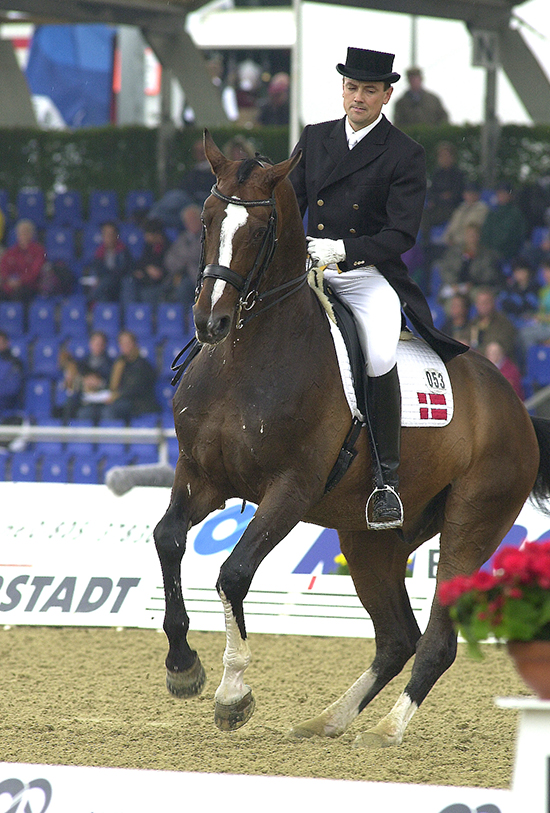
Lars Petersen and Cavan at the Euros in Verden in 2002
Lars Petersen came to international prominence when he rode Blue Hors Cavan – who can forget the endless string of one times changes to ‘who’s afraid of the big bad wolf’? After working at Blue Hors, Lars moved to the United States where he is now based, but he flies to Denmark once a month to train at Blue Hors. And when Lars is not there in person, he can still keep an eye on his pupils.
“We have the camera set up so it follows me in the arena, so Lars can help me. If I have a problem with something I ride it straight to the camera so he can see it clearly. We do that once a week and it is like having a trainer there. He has to get up early anyway to read his newspaper and have his coffee, so he sits at his laptop at home in the kitchen and teaches me.”
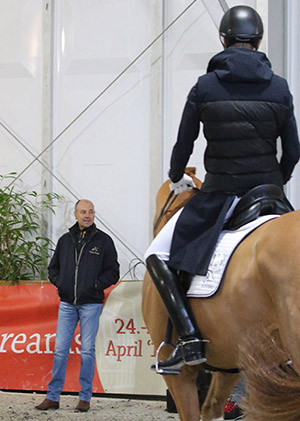
Eyes on the ground at Frankfurt, Lars Petersen
Photo; Kenneth Braddick
You were trained by Rudolf, in the school of Schultheis, where does Lars Petersen fit into that…
“Lars is the same. He rode with Rudolf for so many years when Rudolf was the coach of Denmark and Lars teaches the same way. But Lars rode with Herbert Rehbein, he rode with Willi Schultheis, he knows all these trainers. I would say he learned a lot from them, but he also made his own system with his own things, which I like also – not to copy anyone. Isabell is good, look at Isabell, that works for you? Maybe, not that, that, then you do it, but you have to find your own style. You cannot ride like Isabell, you cannot ride like Rudolf or Ingrid, you have to ride like Daniel Bachmann and trust your own system and take the good things from all the good ones. That’s how I think…”
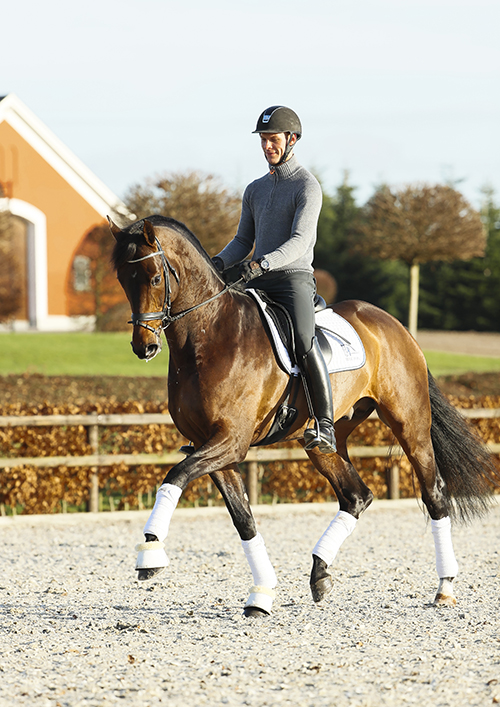
(Photo – Jaques Toffi)
ENDS

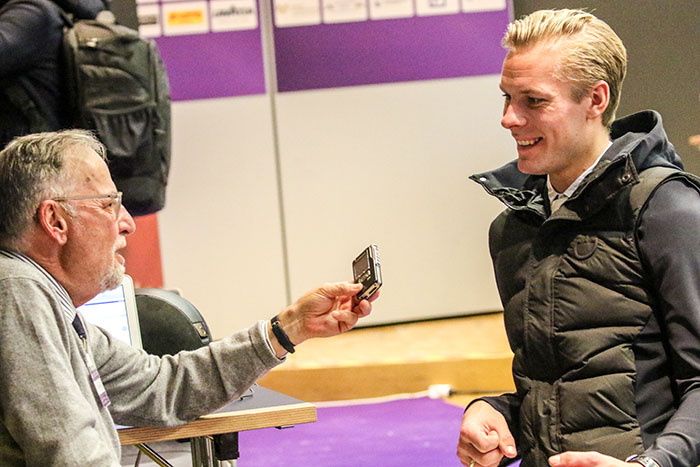
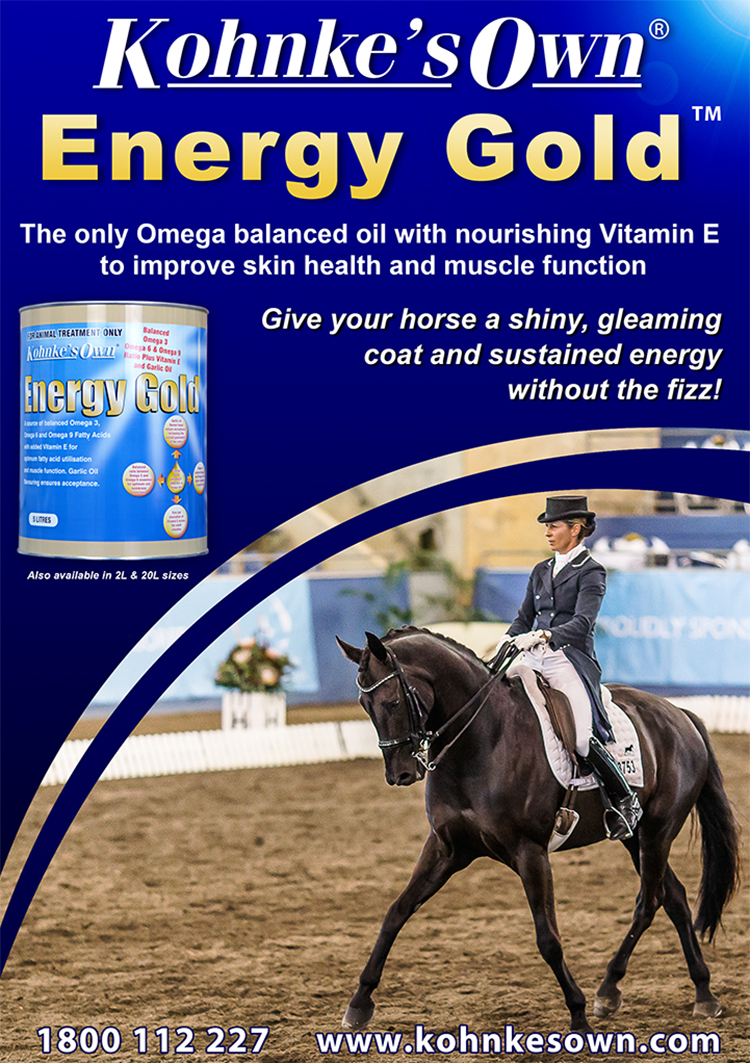
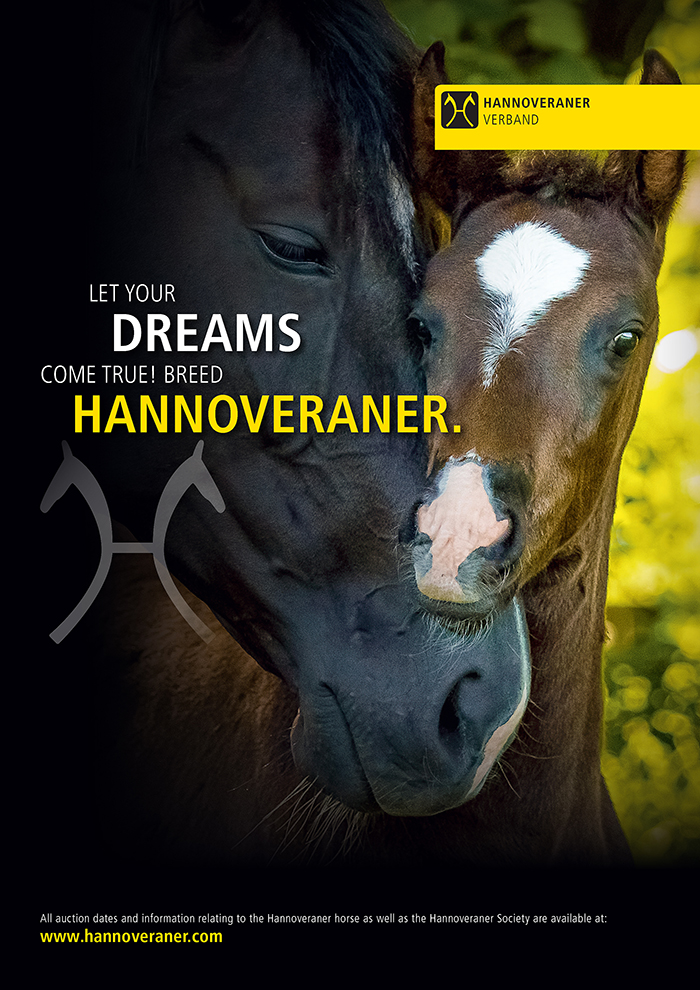
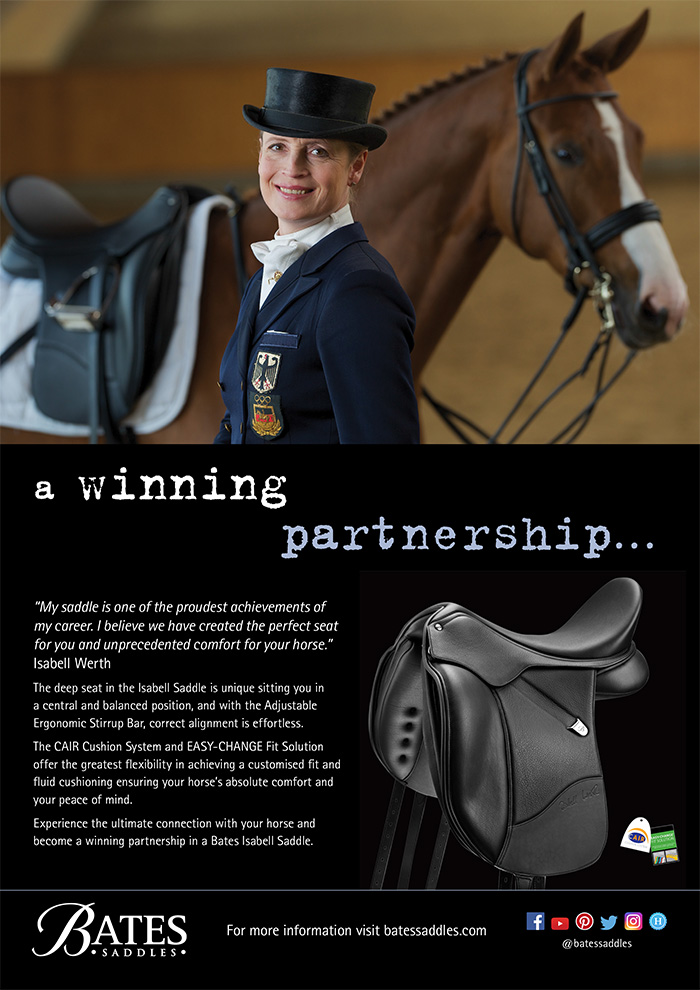
Well, we have something to look forward to at the European Championship!